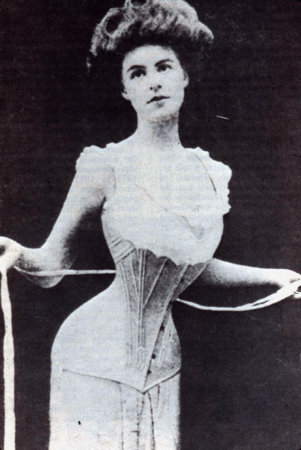Dying for Shapewear? A Very Brief History of the Corset
For centuries, corsets have been used to “beautify” women and accentuate a girlish figure. Corsets originated in Europe during the 15th century and were worn by women from the start of puberty to marriage. The typical corset, made of delicate whale-boning, featured 50 stays. When they reached peak popularity during the Victorian Era, manufacturers took over the craft of corsetmaking, trading in whale bones for steel.
A Victorian corset held much value to the wearer, distinguishing her figure from the cylindrical shape of a hoop skirt, as well as shaping and supporting the breasts, tightening the midriff, and improving posture to the rigidity of high society. It was during the Victorian era that corsets became a fashion statement. Younger women and debutantes would “tightlace” their corsets, causing their waists to appear unnaturally slender and accentuating their breasts. Tightlacing, over time, was extremely detrimental to one’s health. Poor digestion and faintness, along with chronic back pain and fatigue are some of the more tame liabilities of long-term tightlacing, but there is sufficient evidence to support the likelihood of more severe complications, such as muscular atrophy, deformed or collapsed ribs, and even cardiac arrest.
Following World War I, the popularity of corsets crashed. During the war, the government urged women to stop buying steel-boned corsets so that they could use the steel to aid the Armed Forces. Effectively, over 23,000 TONS of steel were liberated- that's enough steel to make two battleships! After the corset was ditched, women found favor with the less constrictive girdles, though the girdle’s popularity was short-lived. The rise of the feminist movement in the early 1900’s, as well as the rise in popularity of the Artistic Dress Movement which began in the late 1800’s and romanticized a woman’s natural waist was the end of the corset era.
Today, corsets are used regularly only by a niche subculture, though millennial fashion pays homage to the corset with “corset dresses” which feature light stays only, and “corset belts” which again feature unusable stays, and rely only on the wide elastic band to accentuate the personal figure of the wearer. Should you choose to wear a corset for any occasion, rely only on well-made corsets from a viable source, and do not wear it any longer than necessary. You are altogether wonderful just the way you are!
